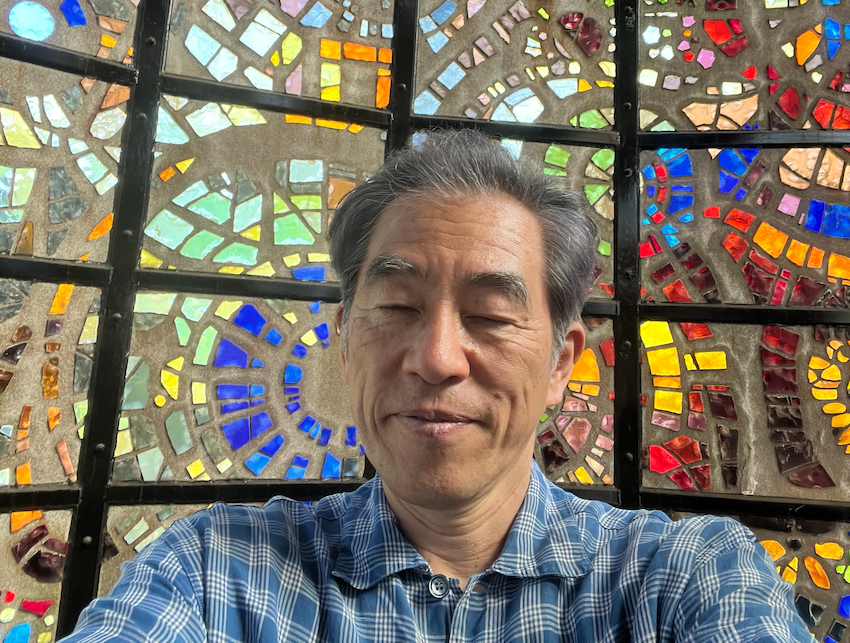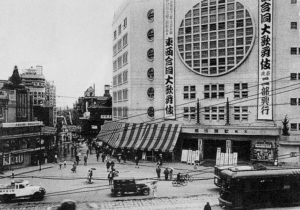About

Masaki Wakabayashi|若林 政樹
I studied xieyi painting as a symbolic art (fu-tu) under a Daoist master from Wudang Mountain, China, learning it alongside the philosophical interpretation of the Rootless Tree (Wugen Shu). I have now completed a series of artworks corresponding to each verse and line of the poems. These paintings express not only the heart of the poetry, but also the unseen elements—qi, rhythm, flow, stillness, and space. It is my hope that these works serve as talismanic art, much like the ancient principles of Chinese feng shui—transmitting and harmonizing qi throughout a space, and sending quiet ripples into the hearts of those who view them. Moving forward, I will continue to create xieyi works inspired by poetry and narrative, reimagined for the present age.中国武当山の道家の老師から、無根樹の哲理の解釈と共に、符図として写意画を学び、全ての詩と首に対する作品が完成しました。その詩の心と、気・リズム・流れ・沈黙・余白といった、見えざるものを表現します。私の作品が、中国伝統の風水のように空間に氣(き)を通し、調律するタリスマン的アートとして、空間と心に静かな波紋を広げることを願っています。今後も、詩や物語などを現在版写意画として描く創作活動を行っていきます。

The Osaka Kabukiza in the 1950s
Born in Osaka in 1957. His maternal grandmother was a female *Rōkyoku* performer named Koushiwaka, and his grandfather was a senior figure (second-in-command) in a bakuto syndicate that managed entertainment enterprises such as the Osaka Kabukiza Theater and the All Japan Pro-Wrestling Association.
From an early age, he received professional training in wrestling, swordsmanship, and performing arts at the dojo of the All Japan Pro-Wrestling Association and the Kabukiza Theater, both operated by his grandfather’s syndicate. He also received instruction in painting from the head billboard artist of the Osaka Kabukiza Theater.
During high school, he studied the Yagyū Shinkage-ryū school of swordsmanship. In adulthood, he began private and intensive training under a Wudang Tai Chi master—formerly a bodyguard to his grandfather—who passed on teachings in Tai Chi, internal cultivation (Tai Chi Gong), Daoist philosophy such as Laozi and The Rootless Tree, Chinese expressive painting (xieyi), and evidential scholarship (kaozheng). At around the age of 30, he received formal certification in these arts. From that point, he began creating xieyi paintings inspired by the philosophy of The Rootless Tree, as a method of deepening his understanding.
In his twenties, he served as CEO of an advertising and planning company. In 1988, he introduced the “Panda Goldfish,” which he had obtained in Hong Kong, to Japan. He gained wide media attention through appearances on TV, newspapers, and magazines, and relocated to Tokyo to expand the business, later working on business development projects for major corporations.
After moving to Yokohama, he founded and managed a nationwide consumer organization for housewives. Since his thirties, he has consistently researched the theories of Tai Chi, promoted its health and martial aspects, and conducted classes in Tai Chi and Qigong.
In 2025, after nearly four decades of dedicated study, he completed the full interpretation of The Rootless Tree’s 24 chapters and 100 verses, along with over 250 xieyi paintings depicting each chapter and verse as symbolic diagrams (fu tu). He became the first in Japan to publish a complete commentary on The Rootless Tree and to present its visual representation through art.
He continues to publish works on Eastern philosophy, Chinese medicine, Tai Chi Gong, Qigong, and Daoist poetic art, releasing new xieyi concept artworks centered on philosophical verse.
Publications include:
– Refining the Body to the Bone through Simplified 24-Form Tai Chi – The World’s Most Beautiful Simplified 24-Form Tai Chi – True History of Tai Chi (3 volumes: Upper, Middle, Lower) – Tai Chi vs. COVID-19 – Dialogue Between Laozi and a Housewife (Dao & De Volumes) – Yang Style 85-Form Tai Chi,/The Rootless Tree/24Chapters/100Verse among others1957年、大阪に生まれる。母方の祖母は女浪曲師の幸枝若・祖父は大阪歌舞伎座や全日本プロレス協会などの興行やスポーツを取り仕切る、博徒組織の代貸(ナンバー2)であった。
祖父の博徒組織が運営する、全日本プロレス協会の道場や歌舞伎座で、幼い頃からプロレス・剣術・芸能などのプロの指導を受ける。また、大阪歌舞伎座の看板絵師から幼い頃から絵の指導を受け、子供の頃は画家になることを目指していた。(光源寺幼稚園の住職であった、幼稚園の園長からの勧めもあり)
高校時代に柳生新陰流を学ぶ。成年時に、祖父の護衛であった武当山の太極拳師範から、太極拳を始めとする太極功、老子、無根樹などの哲理、写意画の技法、考証学などを専門的に一対一で学び、30才の頃に印可を受ける。この頃から師から学んだ技法で、無根樹の哲理を深く理解するために、無根樹に関する写意画を描き始める。
この写意画に強い興味を示す政治家や企業家が現れたが、この時期にパンダ金魚の事業が急激なブームとなり、写意画に関しては一時中断した。
20代で広告企画会社の代表取締役として活動し、1988年には香港で譲り受けた「パンダ金魚」を日本に紹介、テレビや新聞雑誌に多く出演し、事業展開のために東京に移転し、大手企業の事業企画なども手がける。
横浜に移転後、主婦の消費者全国組織を設立運営、30代から絶えず、太極理論の研究・太極拳の養生や理論・武道の伝承を始め、太極拳・気功教室などを開催している。
2025年に、40年近くの時間をかけて、無根樹24章と100首の解釈を全編完成し、無根樹を各章と各首を符図として描いた250点を超える写意画を完成させ、日本で初めてとなる無根樹完全解釈の出版と、符図としての写意画作品を発表した。
今後、東洋哲学や東洋医学、太極功・気功などに関する書籍の出版や、哲理詩を中心にした写意画を描く、コンセプトアート作品を随時発表していく。
